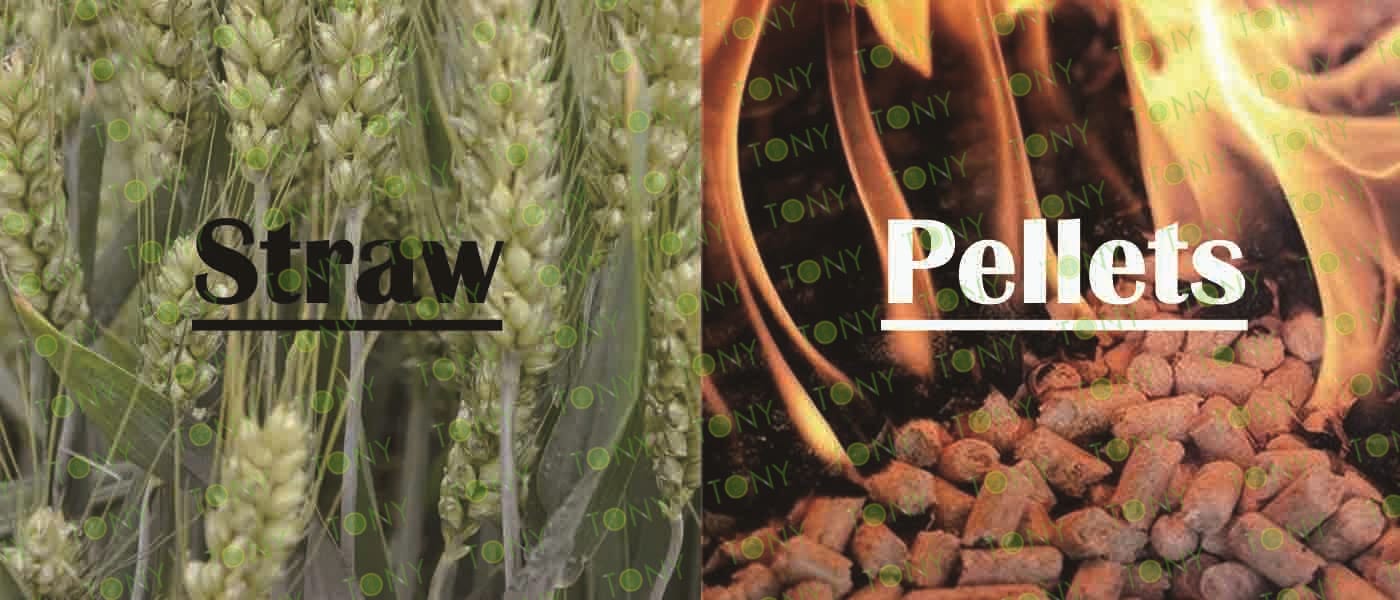The biomass pellet machine processes crop straw into green and environmentally friendly biomass pellet fuel. This low-cost, low-carbon and environmentally friendly biomass fuel can also replace coal, and the market prospect is very broad. It not only turns straw from waste into treasure but also protects the "blue sky and white clouds". By comprehensively utilizing straw, we can turn waste into treasure, achieving a "win-win" situation of environmental protection and increased income.
Using corn stalks and rice straw as raw materials. Dry the raw materials to an appropriate moisture content, and then crush the dried raw materials with a straw rotary cutter and further grind them into sawdust by a crusher. Then, the straw pellet machine is used for high-temperature extrusion and pelletizing. The processed straw pellets are conveyed to the cooler for cooling and screening. Then it will be packaged.
The main equipment required in this process includes rotary cutter, hammer mill, straw pellet machine, coolers, packaging machine, etc.
The economic benefits of straw pellet fuel processed by biomass pellet machines are influenced by multiple factors such as raw material costs, market demand, production scale, and policy support.
1.Stability of raw material supply
Advantages: In areas rich in straw resources, the raw material cost is low and transportation is convenient.
Risk: If raw materials rely on cross-regional procurement, costs may rise, and there are seasonal supply fluctuations (such as straw being concentrated on the market after autumn harvest and tight supply at other times).
2. Market demand and price fluctuations
Fuel pellets: They are greatly influenced by the price of coal (when the price of coal rises, the demand for biomass fuel increases).
Feed pellets: Affected by the market conditions of the livestock industry (such as pig prices and the number of cattle and sheep in stock) and the prices of feed raw materials (such as corn and soybean meal).

3. Production efficiency and energy consumption control
The drying process is the major source of energy consumption: if solar drying or waste heat recovery technology is adopted, the energy consumption cost can be reduced by 10% to 30%.
Equipment selection: High-efficiency pelletizing machines (such as ring die pelletizing machines) have higher production capacity and lower wear than flat die pelletizing machines, and they can save maintenance costs in the long run.
4. Policies and Environmental Protection Requirements
Environmental protection standards: It is necessary to ensure that dust and waste gas emissions meet the standards to avoid production suspension and rectification due to environmental protection issues.
Policy support: Pay attention to the local subsidy policies for biomass energy and straw utilization. If the subsidy is generous, it can significantly increase profits.
Overall, in regions with abundant straw resources and strong policy support, the processing of straw pellets by pellet machines is a project that combines environmental and economic value, especially suitable for areas with energy shortages or developed animal husbandry.





















